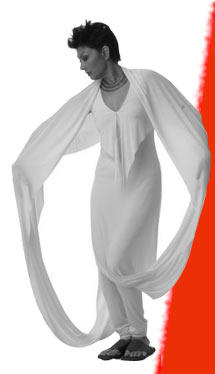Mallika Writes: Just Speaking
Oh our pure Indian culture!
A few days ago I was both amused and bemused to read in this paper the results of a survey which tried to see the trends in young people today about love, marriage, live in relationships and pre marital sex. Many of the youngsters surveyed voiced the opinion that live in relationships and pre-marital sex were “against our Indian ways and culture”.
In today's context this is something one hears frequently from the moral brigade trying to Talibanise India and Hinduism. Which culture are we speaking about? Which monolith? Which homogeneous mass of ritual, belief, thought, dress, food, language? And from what knowledge base or understanding do we/they pontificate?
Take your average college student. Or your average urban person on the street. What is their definition of our culture? And from where have they gleaned it? Hindi films? TV?
The self righteous arbitrators of Hinduism and Islam? Their families?
A few years ago, for a TV show we were doing, and to try and disabuse ourselves from puerile ideas of purity, we went around asking people what they felt was typically Indian. Here are some of the most frequently given answers – our food, the sari, Gujarati as a language, classical music, jewelry and especially the nose ring, a symbol of the saubhagyavati.
Look at ancient paintings and sculptures. Not one of the highly decorated goddesses or women, not in the Tanjore temples or in Chidambaram, nor in Khajuraho, not in the frescoes of Ajanta, wear a nose ring. Unbelievable but true. Every other part of their bodies are bejeweled, but no nose ring. Why? Because the nose ornament only came into India around the 16 th century, brought in by the Persians. In fact it is an ornament that was worn in Inner Asia for many hundreds of years but never here. The earliest recorded nose ring is one worn by Cleopatra's cat, immortalized in a statue now in the British Museum.
Similarly, look at the clothes of the women in these same sculptures (if they have any on). They wear two drapes, one tied around the hips, waist and legs, and another around the breasts. The garments or drapes are not joined, and there is never a cloth that flows over the shoulder, a must in nearly every form of the sari. History once again tells us that Helen – not the launcher of a thousand ships, but another one, the wife of the Commander In Chief of Alexander's army was seen sporting a garment single pleats in the bottom center with a flowing shoulder cloth, and it was this that inspired the sari, a single piece of cloth with a flowing pallu.
And then food. How many of the upholders of “our Indian culture” know that as late as 250 years ago the Indian meal would have been unrecognizable for it would have been missing the one single ingredient we associate with it today – the chili. Yes till the chili came from Mexico, our food was spiced with pepper. Pepper was expensive and so spiced food could only be afforded by the rich. And the chili revolutionized Indian food.
Coffee came from Arabia, brought by Baba Budhan to whom a shrine still stands in the South. And tea of course came from China.
I could go on and on. And to me there is nothing wrong or inferiority-producing in the knowledge that we have taken the gifts of the world and made them so totally Indian. And to disprove this idea of a single Indian culture we don't even have to go that far in history or in space. In the ghotuls of Madhya Pradesh it was the done thing for young women and men to have pre marital sex and companionship to ensure that the choice of the spouse was correct and the marriage would be stable. And in many parts of the country young men of means were trained in the arts of the erotic by courtesans as part of their growing up.
Whether we as individuals approve or disapprove of certain things depends entirely on us. But it is time to understand our own plural and often contradictory culture and to not hide behind our inaccurate and usually faulty view of Indianness.
August 18, DNA
|

